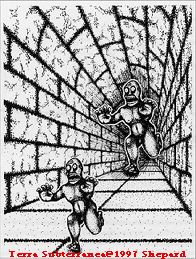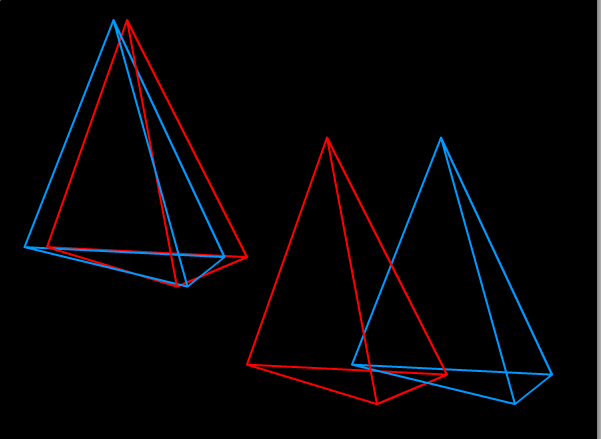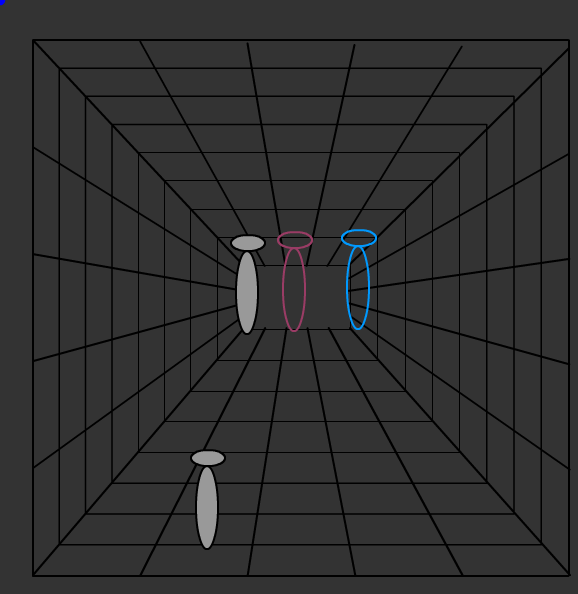
It is well-known that the perception of object size is affected by perceptual cues such as perceived depth. A delghtful demonstration of this is Shepard's 'Chase' figure, in which suggested depth comes from perspective cues:

See http://www.dushkin.com/connectext/psy/ch04/sizecon.mhtml for an animated version of this effect. See also http://aris.ss.uci.edu/wgrad/personnel/jturner/sizecon.html and http://www.cogsci.uci.edu/personnel/braunstein/sizecon.mpg for a study of size constancy in a structure from motion setting.
The following anaglyph demonstrates a size from depth effect. It consists of two elements, all congruent in both left- and right-eye views. Viewed through anaglyphic glasses these appear as a pair of triangular pyramids at different visual depths. With the red filter over one's right eye, the bottom pyramid is forward and distinctly smaller (perhaps 20%) than the top pyramid. With the red and green filters reversed to the opposite eyes, the top pyramid is forward and distinctly smaller than the bottom pyramid. See http://www.psych.nyu.edu/kaufman/perceptual_distance2.pdf. for a related study.

It might either be that the size-constancy effect is applied after the assembly of image fragments into visual objects, or that it is applied earlier in visual processing. Our next image indicates that, at last when the depth cue comes from stereo vision, the latter alternative is more plausible. This anaglyph combines two stereo pairs, both equally wide at all levels in both the left-eye and right eye images. Seen binocularly, these appear as strongly tilted trapezoids with distinctly larger rear than front edges. Since this effect affects object parts rather than full objects, it can well occur as part of early visual processing, before assembly of image elements into gestalt fragments.

The next image explores the relationship between perspective and stereo cues in size perception. It is a simplified version of Shepard's figure, with 3 items placed toward the rear in perspective, and one toward the front. All have identical outlines. Of the three rear figures, one is filled and two are hollow. The hollow items are set up for anaglyphic viewing. Viewed monocularly, the item in the perspective foreground seems slightly smaller than the background figures, though the effect is not as strong as in the original Shepard version. When viewed anaglyphically (with the red filter over one's right eye), the two hollow figures fuse into a single figure forward in depth. This appears distinctly smaller than all the others, showing that the perspective size cue which otherwise would affect it is overcome by the stereo depth cue.

Next we explore the effect of stereo depth cues on perceived object velocity. (The figure below is a Flash animation (.swf file) requiring the Flash player available free from Adobe. Please be sure that this player is installed before attempting to view the animated anaglyph.)
Judging from this animation, depth cues seem to have a (weak) effect on perception of object speed. The two figure items seen move in opposite directions at identical speeds. But seen anaglyphically, with one of the two items moved forward in depth and so reduced in size (with the red filter over your right eye this will be the bottom pyramid) the smaller item seems to be moving a bit more slowly than the larger. This (weak) effect persists if the role of the pyramids is reversed by interchanging filters between your two eyes.